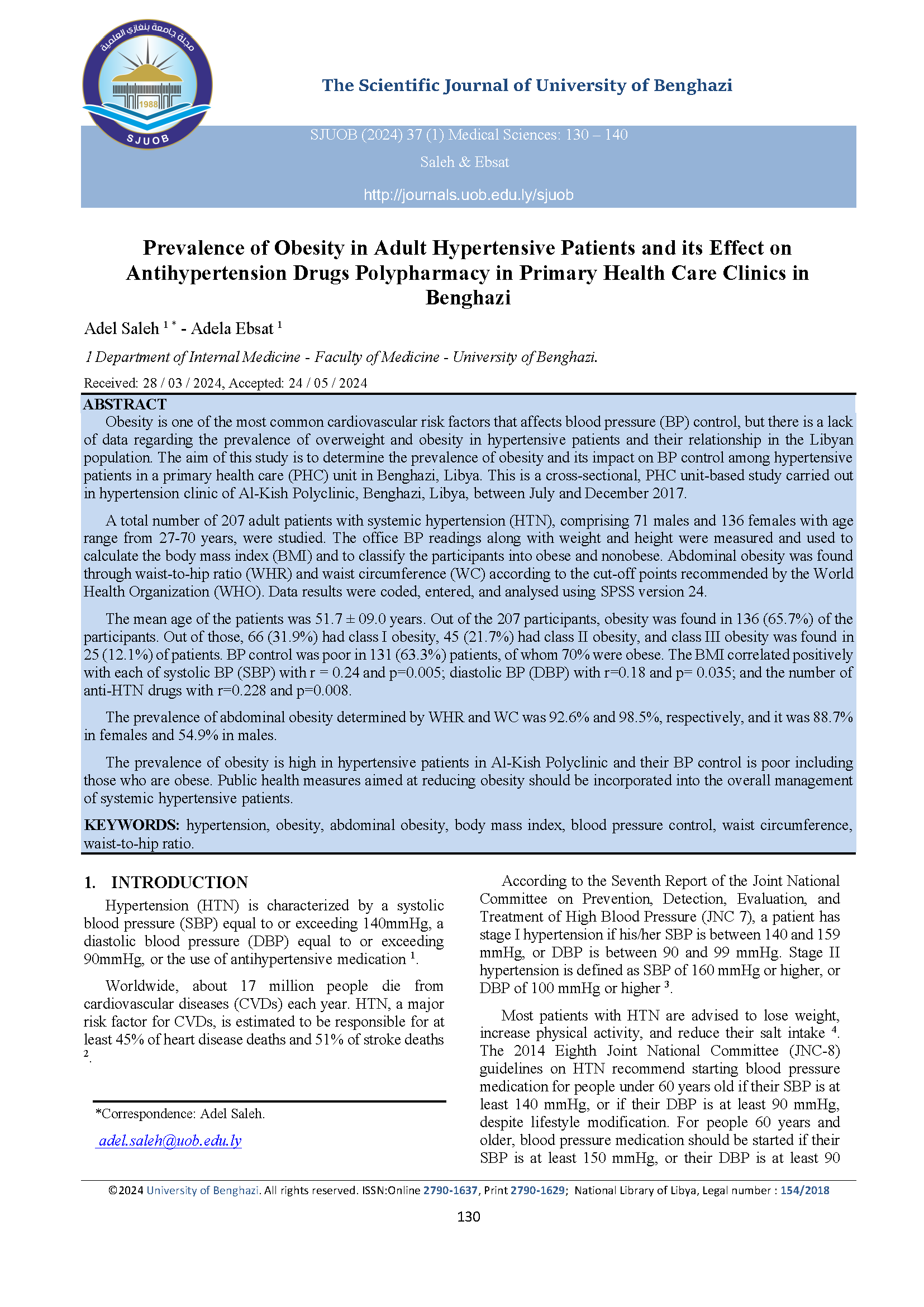Prevalence of Obesity in Adult Hypertensive Patients and its Effect on Antihypertension Drugs Polypharmacy in Primary Health Care Clinics in Benghazi
DOI:
https://doi.org/10.37376/sjuob.v37i1.5947Keywords:
hypertension, obesity, abdominal obesity, body mass index, blood pressure control, waist circumference, waist-to-hip ratioAbstract
Obesity is one of the most common cardiovascular risk factors that affects blood pressure (BP) control, but there is a lack of data regarding the prevalence of overweight and obesity in hypertensive patients and their relationship in the Libyan population. The aim of this study is to determine the prevalence of obesity and its impact on BP control among hypertensive patients in a primary health care (PHC) unit in Benghazi, Libya. This is a cross-sectional, PHC unit-based study carried out in hypertension clinic of Al-Kish Polyclinic, Benghazi, Libya, between July and December 2017.
A total number of 207 adult patients with systemic hypertension (HTN), comprising 71 males and 136 females with age range from 27-70 years, were studied. The office BP readings along with weight and height were measured and used to calculate the body mass index (BMI) and to classify the participants into obese and nonobese. Abdominal obesity was found through waist-to-hip ratio (WHR) and waist circumference (WC) according to the cut-off points recommended by the World Health Organization (WHO). Data results were coded, entered, and analysed using SPSS version 24.
The mean age of the patients was 51.7 ± 09.0 years. Out of the 207 participants, obesity was found in 136 (65.7%) of the participants. Out of those, 66 (31.9%) had class I obesity, 45 (21.7%) had class II obesity, and class III obesity was found in 25 (12.1%) of patients. BP control was poor in 131 (63.3%) patients, of whom 70% were obese. The BMI correlated positively with each of systolic BP (SBP) with r = 0.24 and p=0.005; diastolic BP (DBP) with r=0.18 and p= 0.035; and the number of anti-HTN drugs with r=0.228 and p=0.008.
The prevalence of abdominal obesity determined by WHR and WC was 92.6% and 98.5%, respectively, and it was 88.7% in females and 54.9% in males.
The prevalence of obesity is high in hypertensive patients in Al-Kish Polyclinic and their BP control is poor including those who are obese. Public health measures aimed at reducing obesity should be incorporated into the overall management of systemic hypertensive patients.
Downloads

Downloads
Published
How to Cite
Issue
Section
License
Copyright (c) 2024 The Scientific Journal of University of Benghazi

This work is licensed under a Creative Commons Attribution-NonCommercial-NoDerivatives 4.0 International License.















